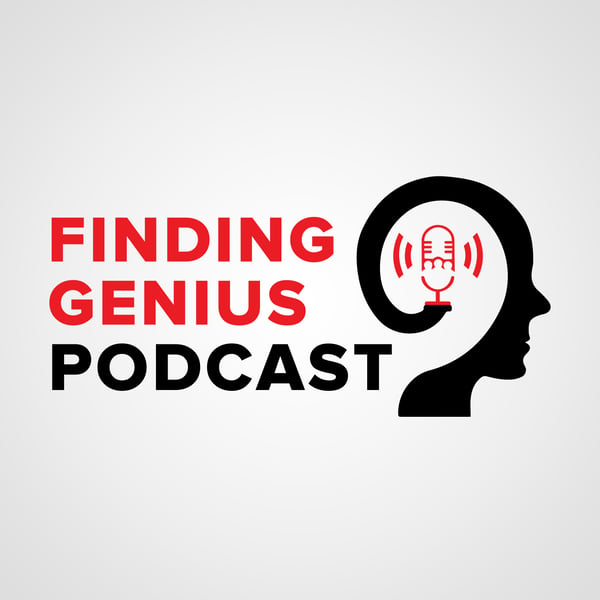Giant Viruses: Frank Aylward and the Beauty of Microbial Diversity
Finding Genius Podcast
Richard Jacobs
4.4 • 1K Ratings
🗓️ 19 May 2021
⏱️ 31 minutes
🧾️ Download transcript
Summary
"The evolution of the nucleus may have initially occurred . . . because of this coevolutionary dynamic with giant viruses," says Professor Frank Aylward. He shares several mysterious tidbits of giant virus evolution and how these particles may have caused evolutionary pressures that produced everything from the silica shell of diatoms to cellular metabolism.
Listen and learn
- What determines giant viruses, an interesting group of DNA viruses that infect eukaryotes,
- How scientists think microbial evolution led to their large size,
- What genomics and bioinformatics tells scientists about giant viral genomes and why they're still surrounded by mystery, and
- Why giant virus genome evolution indicates some exciting dynamics of viral indigenization.
Frank Aylward is an assistant professor of biological sciences, at Virginia Tech. He specializes in microbial diversity and is fascinated by the abundance of microbes "that play critical roles in human health, the evolution of life on Earth, biogeochemical cycling, and the biosphere."
Lately, he's focuses on giant viruses. These viruses are distinct for their size and their propensity to only infect eukaryotes. This means, for example, that while giant viruses and bacteriophage have different domain hosts, they're just as abundant, present in waters alongside marine bacteria, in soil, and even in freshwater.
He shares numerous fascinating aspects of what these viruses tell us about our world. For example, they may have developed their size from an evolutionary effort of tricking amoeba into eating them. They practice biological mimicry, mimicking the look of the microbes that amoeba like to eat, so the amoeba will phagocytose it: the Mimi virus actually stands for mimicking microbe. Professor Aylward shares more about the natural history of these viruses, down to their connection with cellular nuclei and metabolism.
Listen in for more about the magic in microbial diversity.
Episode also available on Apple Podcasts: apple.co/30PvU9C
Transcript
Click on a timestamp to play from that location
| 0:00.0 | Forget frequently asked questions. |
| 0:02.0 | Common sense, common knowledge, or Google. |
| 0:05.0 | How about advice from a real genius? |
| 0:07.0 | 95% of people in any profession are good enough to be qualified in license. |
| 0:11.0 | 5%? |
| 0:12.0 | Go above and beyond. |
| 0:13.0 | They become very good at what they do. |
| 0:15.0 | But only 0.1% are real geniuses. |
| 0:18.0 | Richard Jacobs has made his life's mission to find them for you. |
| 0:22.0 | He hunts down and interviews geniuses in every field. |
| 0:25.0 | Sleep science, cancer, stem cells, ketogenic diets, and more. |
| 0:29.0 | Come the geniuses. |
| 0:30.0 | This is the Finding Genius Podcast. |
| 0:33.0 | The Richard Jacobs. |
| 0:36.0 | Quick note before we begin. |
| 0:39.0 | The Finding Genius Foundation, as part of the Finding Genius Podcast, |
| 0:42.0 | has recently completed a book about understanding viruses. |
| 0:46.0 | So the creation of this book was to interview 100 virologists, |
| 0:50.0 | ask them a lot of deep difficult questions, take the most difficult questions, |
| 0:54.0 | and then re-interview the top 25 or so, |
| 0:57.0 | and ask them the hardest questions I could think of. |
| 1:00.0 | And we compile that all into a book. |
... |
Please login to see the full transcript.
Disclaimer: The podcast and artwork embedded on this page are from Richard Jacobs, and are the property of its owner and not affiliated with or endorsed by Tapesearch.
Generated transcripts are the property of Richard Jacobs and are distributed freely under the Fair Use doctrine. Transcripts generated by Tapesearch are not guaranteed to be accurate.
Copyright © Tapesearch 2025.

